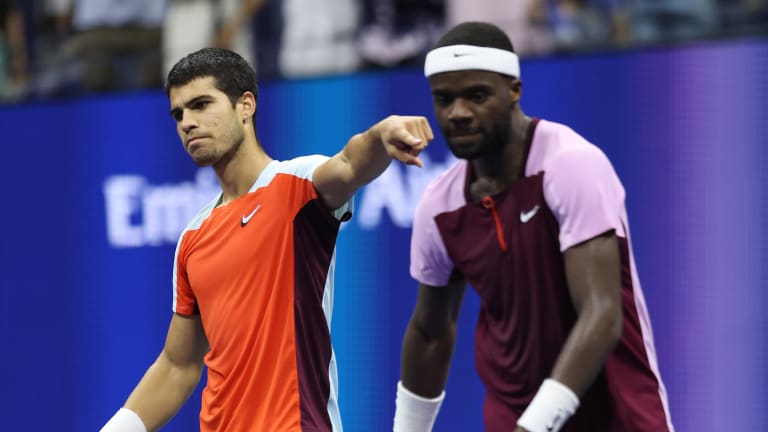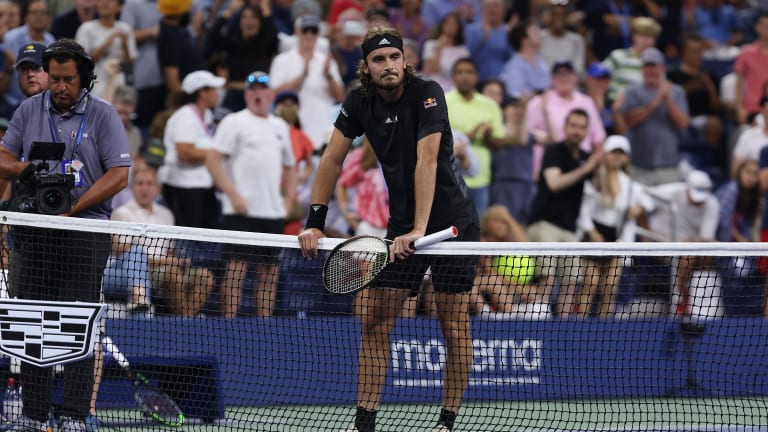US Open
With Carlos Alcaraz and co., the ATP's long-awaited “changing of the guard” achieved critical mass—for some, not a moment too soon
By Sep 12, 2022US Open
Beyond The Champions: 2025 US Open Winners and Losers
By Sep 10, 2025US Open
In US Open defeat, Jannik Sinner faces his shortcomings
By Sep 09, 2025US Open
Amanda Anisimova's US Open fortnight wasn't just "incredible"—it was redemptive
By Sep 09, 2025US Open
Overcoming Doubt, Finding Deliverance: Six WTA takeaways from the 2025 US Open
By Sep 08, 2025US Open
Service and a smile: How Carlos Alcaraz conquered Jannik Sinner at the 2025 US Open
By Sep 08, 2025US Open
Carlos Alcaraz captures sixth Slam and second US Open title, dethrones No. 1 Jannik Sinner
By Sep 07, 2025US Open
Alcaraz vs. Sinner US Open final start delayed by 30 minutes
By Sep 07, 2025US Open
Blinding Lights: Amanda Anisimova rues missed opportunities, serve woes after US Open final
By Sep 07, 2025US Open
Aryna Sabalenka has been No. 1 all year — after winning US Open, now she’s back on top, too
By Sep 07, 2025With Carlos Alcaraz and co., the ATP's long-awaited “changing of the guard” achieved critical mass—for some, not a moment too soon
“We knew it (a transition) would eventually come sooner or later, and it looks like it was later,” said John McEnroe.
Published Sep 12, 2022
Advertising
Advertising

Tiafoe and Alcaraz dominated the second-week headlines in New York, and they may be in store for more.
© Getty Images
Advertising

Tiafoe and Alcaraz dominated the second-week headlines in New York, and they may be in store for more.
© Getty Images
Advertising

Stefanos Tsitsipas experienced another difficult loss at the US Open.
© Getty Images